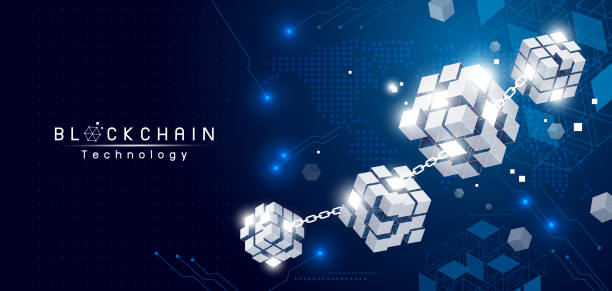
Unlocking the Trillion Dollar Potential of Crypto: Realizing Real World Asset Tokenization
The fusion of the digital and physical realms through the tokenization of real-world assets (RWAs) is poised to redefine our understanding of ownership and investment. The tokenization of RWAs is a new frontier in finance that is emerging with the promise to unlock a trillion-dollar opportunity.
This innovative concept is poised to bridge the gap between traditional financial markets and the burgeoning crypto space, potentially transforming both realms in unprecedented ways. This article delves into the trillion-dollar opportunity that this fusion presents, exploring the transformative potential of RWA tokenization within the dynamic landscape of cryptocurrencies:
About Real World Asset Tokenization
Real World Asset Tokenization represents a revolutionary process that transforms tangible assets such as real estate, art, and commodities into digital tokens, facilitating their trade and ownership on blockchain platforms. This process is managed by tokenizers, the companies responsible for managing asset tokenization’s technical, legal, and regulatory aspects.
Real World Asset Tokenization is a revolutionary concept that is gaining significant traction in the financial and real estate sectors. It offers numerous benefits, including increased liquidity, fractional ownership, cost efficiency, and enhanced transparency. Below, you can find the benefits of Real World Asset Tokenization:
1. Liquidity
Tokenization facilitates easy asset buying and selling, improving liquidity in traditionally illiquid markets like real estate.
2. Fractional Ownership
This fragmentation of high-value assets into smaller units enhances accessibility, enabling a broader spectrum of investors to participate.
3. Cost Efficiency
The use of blockchain technology can help reduce transaction costs and minimize intermediaries, resulting in a cost-effective investment ecosystem.
4. Transparency
The inherent transparency and immutability of blockchain technology ensure secure and efficient trading, mitigating the risk of fraud and instilling confidence among investors.
Example of RWA Tokenization
Mantra Chain is a Layer 1 blockchain that is specifically designed for Real World Asset (RWA) Tokenization. The platform bridges the gap between traditional finance (TradFi) and decentralized finance (DeFi) by providing the necessary infrastructure for tokenizing RWAs while adhering to real-world regulatory requirements. By catalyzing the adoption of tokenized Real World Assets (RWAs), platforms like Mantra Chain have the potential to unleash the vast $16 trillion RWA economy, providing a regulatory-compliant blockchain infrastructure.
Through Mantra Chain’s regulatory framework, traditional financial institutions can seamlessly transition to and capitalize on asset tokenization and blockchain solutions, propelling global RWA expansion. Mantra Chain recently secured $11 million in funding to develop a network tailored to real-world assets. This funding will bolster Mantra’s efforts to facilitate the widespread tokenization of RWAs. The platform facilitates fast cross-chain transactions and boasts a vertically integrated blockchain ecosystem.
The Market Landscape
The market for tokenized assets, a rapidly growing sector in the financial world, is projected to reach an impressive USD 10 trillion by the year 2030. This significant growth is primarily driven by the increasing adoption of blockchain technology, a revolutionary digital ledger system that allows for secure and transparent transactions.
In addition to this, there is a rising demand for fractional ownership, a concept that allows for the division of a single asset into multiple shares. This enables more individuals to invest in high-value assets, such as real estate or artwork, that they may not have been able to afford otherwise. Furthermore, the need for more efficient and transparent asset trading is also a significant factor contributing to the growth of the tokenized assets market.
The Role of Regulation
As with any financial innovation, adherence to existing regulations remains paramount. This is to ensure a secure and transparent ecosystem for all stakeholders involved, from investors to regulatory bodies. The European Union, for example, imposes a comprehensive regulatory framework for companies involved in tokenization. This framework is designed to protect investors, prevent fraud, and promote transparency in the market.
The Future Outlook
Analysts forecast that tokenization will encompass over $16 trillion in economic activity by 2030. This trend is only accelerating, with over $3 billion in real-world assets already tokenized. This reflects the market’s bullishness about the potential impact of Decentralized Finance (DeFi) in traditional finance sectors.
DeFi refers to using blockchain technology to remove intermediaries from financial transactions, making these transactions more efficient and accessible. The tokenization of real-world assets is a key component of this trend, and its continued growth is a testament to DeFi’s transformative potential.
Conclusion
The tokenization of real-world assets represents a significant opportunity within the crypto space, potentially unlocking trillions of dollars in value. As the technology matures and regulatory frameworks adapt, we may witness a new era of ownership, trading, and investment, reshaping the economic landscape for generations to come. Platforms like Mantra Chain will be crucial in this transformation, offering secure and transparent environments for developing and trading these tokenized assets.



